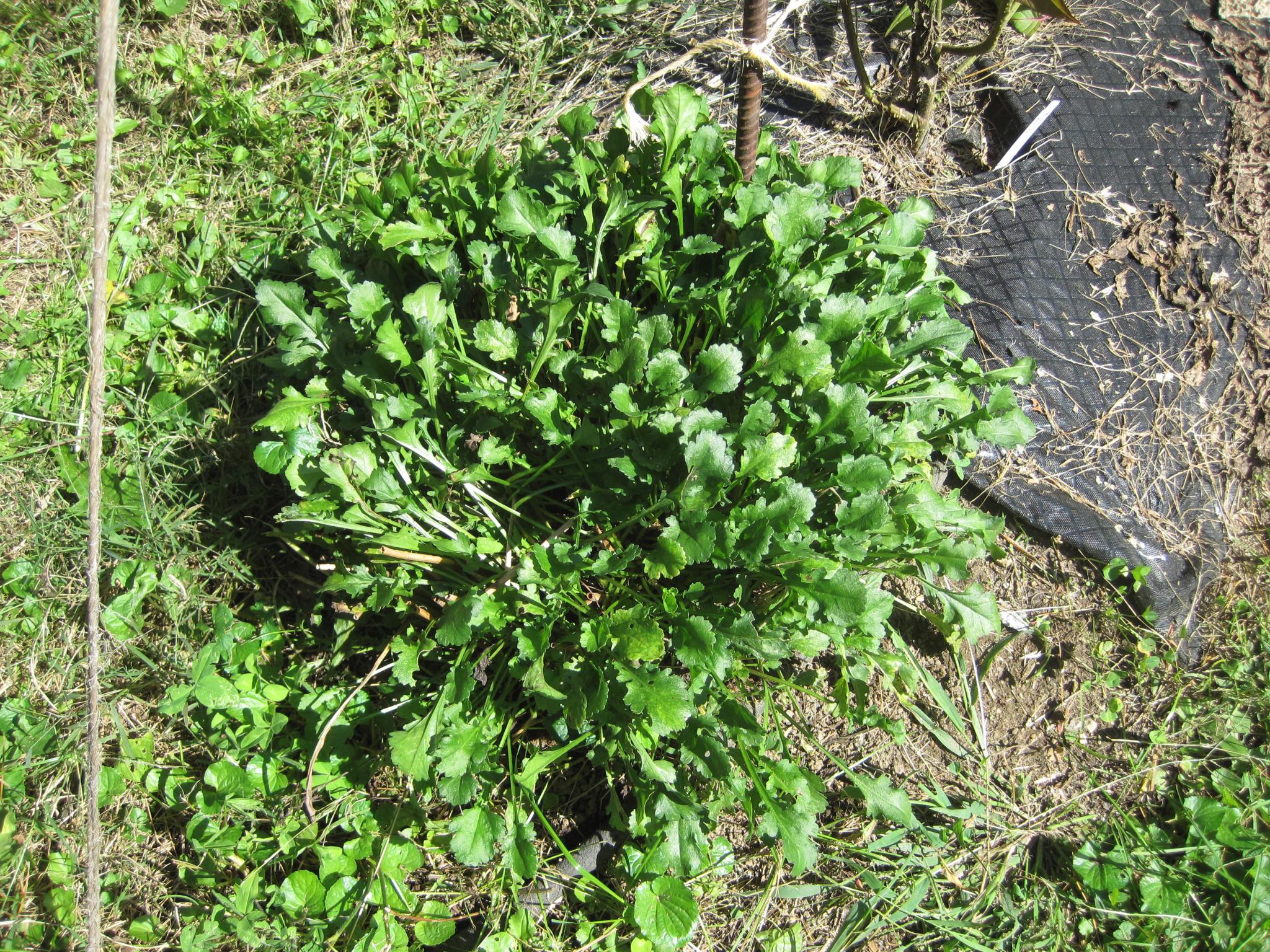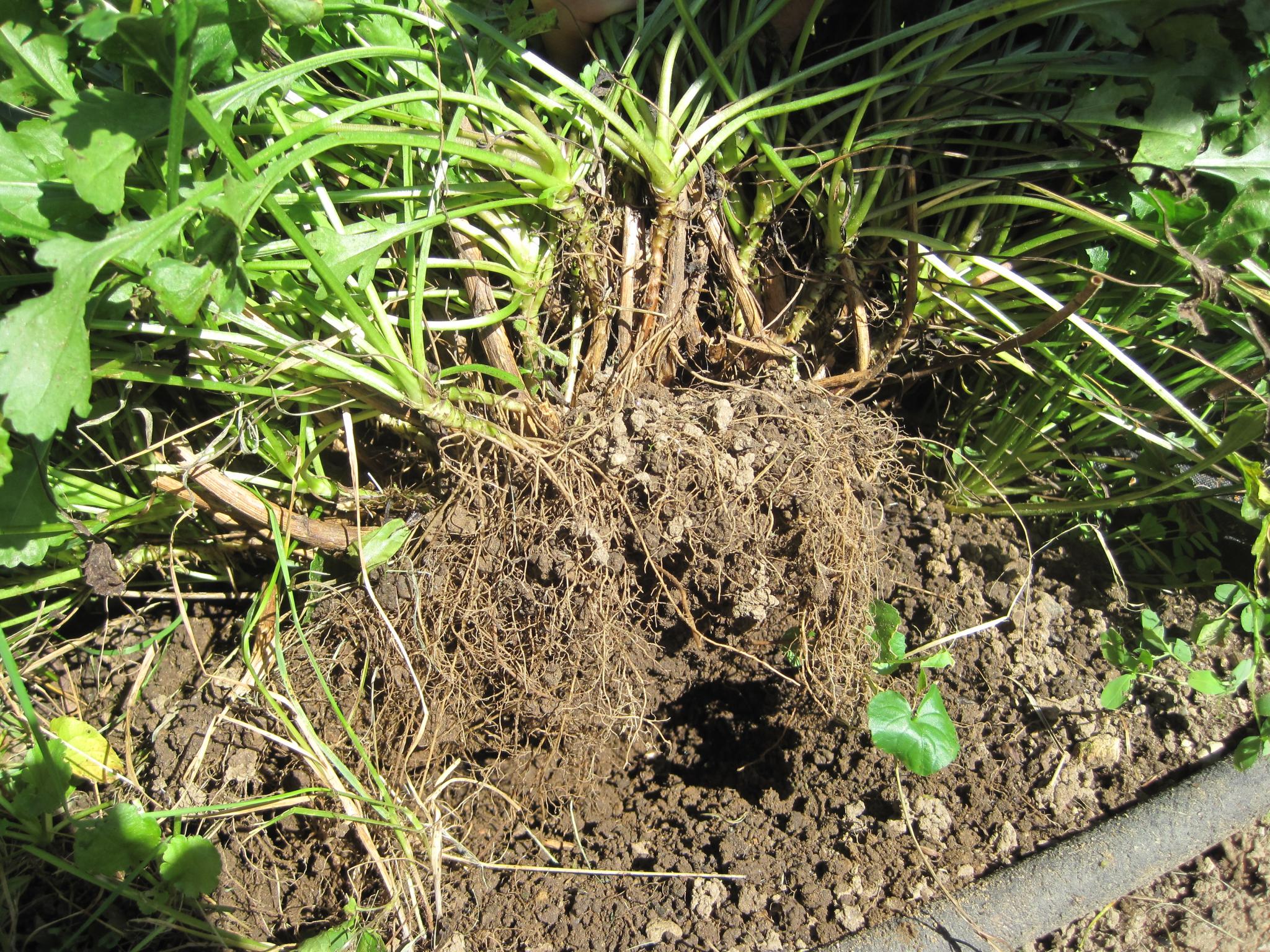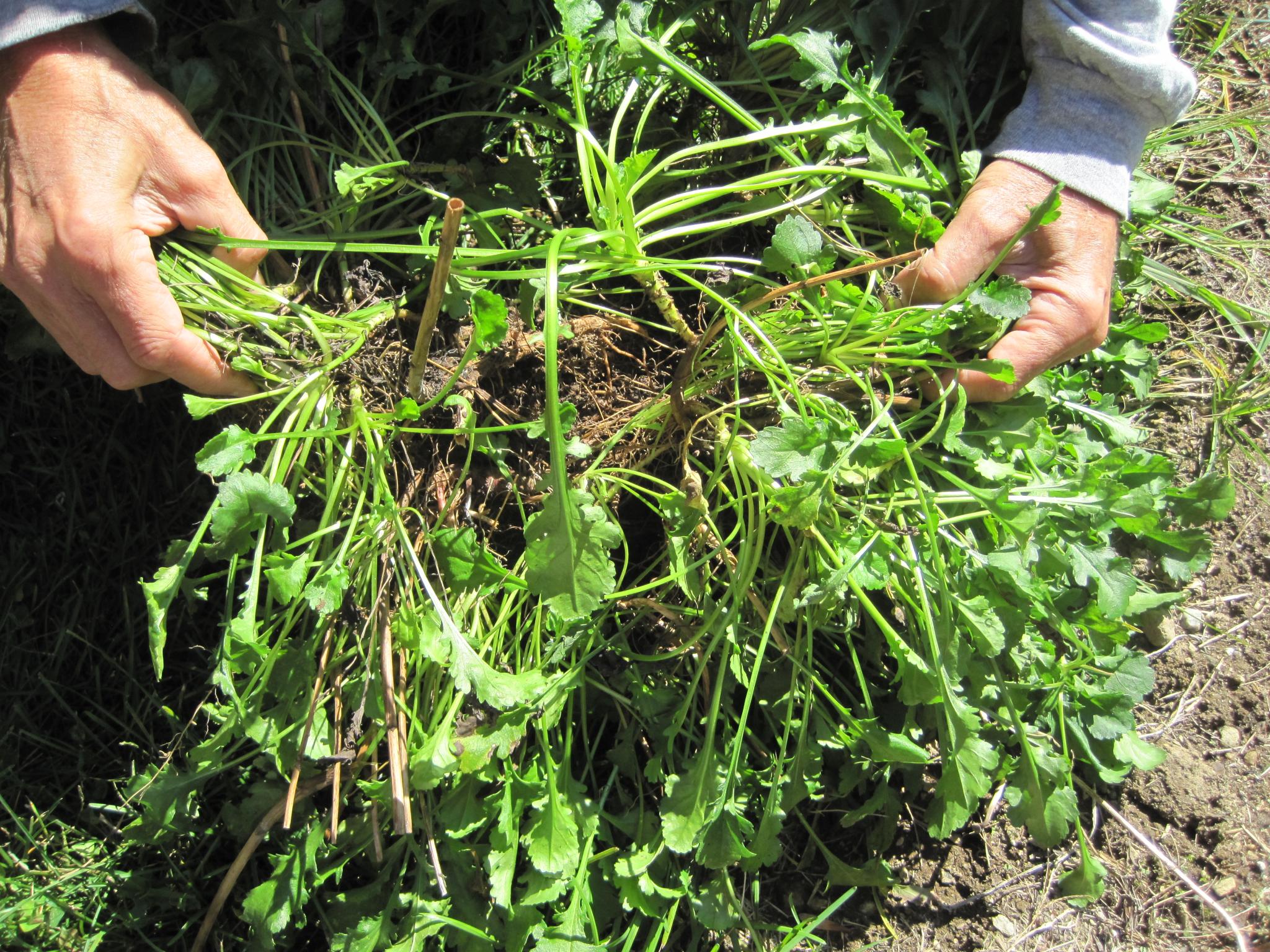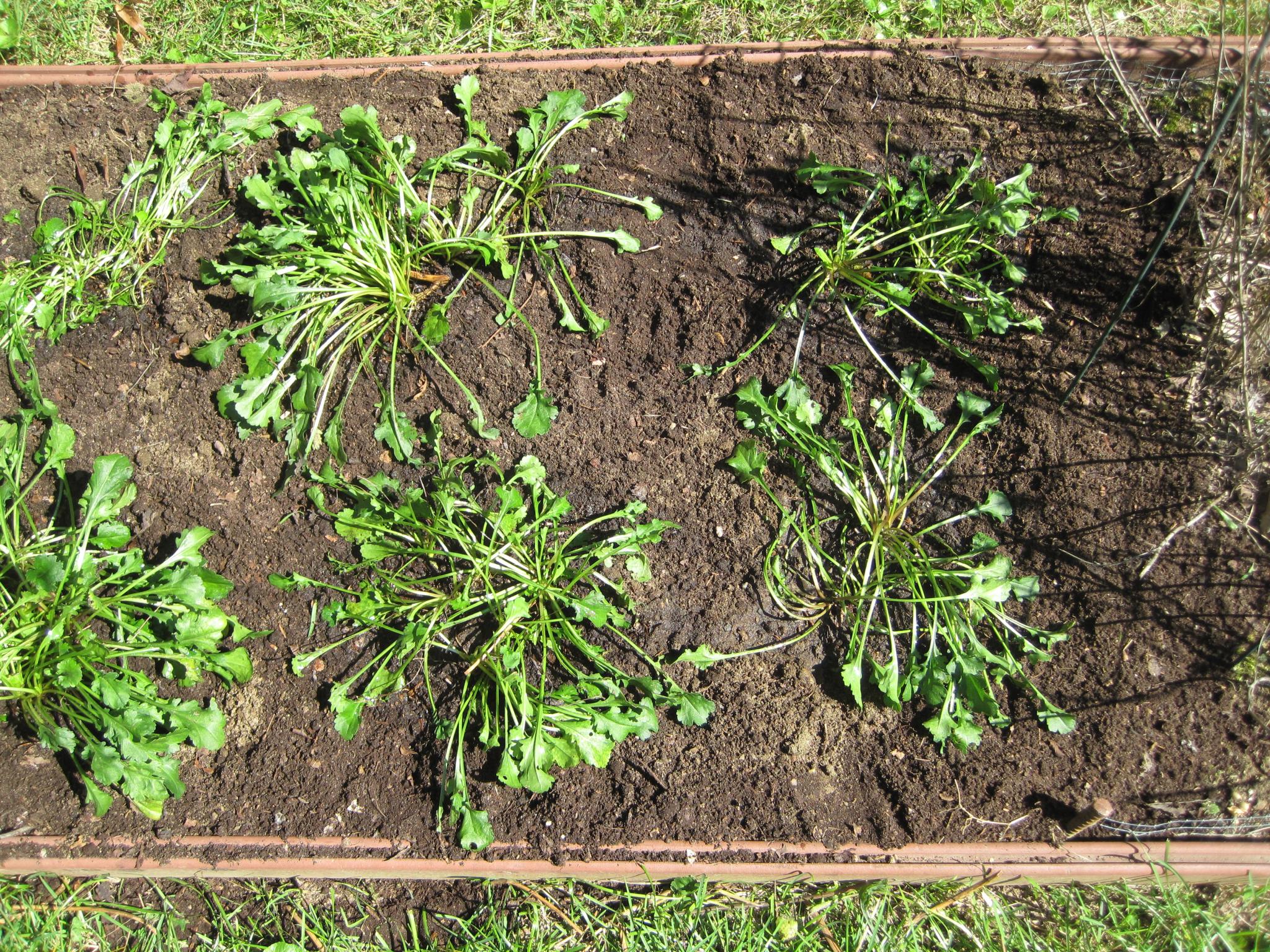Budgets are tight right now, but you don’t have to put your dream garden on hold. Fill up any empty spaces you have by splitting up overcrowded perennials. See how and when to divide perennials—and which can be divided in fall versus spring.
Advertisement
Why Divide Perennial Plants?
Perennials are plants that grow back each year (versus annuals). Dividing or splitting your plant into multiple plants helps it perform better.
Don’t worry, you are not being cruel. When plants get too crowded they become weakened, their flowers get smaller, and some may stop blossoming altogether. If you noticed some of your perennials did not bloom well this summer, they might benefit from division so they have more space for roots to grow and can better absorb nutrients and water. Splitting plants is also an effective way to keep spreading plants under control and manage their size.

This clump of daisies is growing in my vegetable garden. It needs a new home.
When to Divide Perennials
Clump-forming plants like daisies, phlox, yarrow, feverfew, salvia, chives, daylilies, hostas, ornamental grass and many spring bloomers are easy to divide in the fall.
Leave the autumn flowering plants such as asters and chrysanthemums until spring and never divide a plant when it is in bloom. Also don’t divide single-stemmed or tap-rooted plants.
Which Common Perennials Are Divided in Fall Vs Spring
Allium, Fall
Aster, Spring
Astilbe, Spring or fall
Bee balm, Spring
Black-eyed Susan, Spring or fall
Catmint, Spring
Clematis, Spring
Columbine, Spring or late summer
Coral bells, Spring or fall
Daylily, Spring or after flowering in early fall
Delphinium, Spring
Echinacea, Spring or early fall
Goldenrod, Spring or fall
Hostas, Spring or fall
Iris-Siberian, Spring or early fall
Lily, Late summer/early fall
Mint, Spring or fall
Mum (Hardy), Spring
Peony, Early fall only.
Phlox, Spring or early fall
Hibiscus, Spring or fall
Sage (Salvia), Spring or fall
Shasta daisies, Spring or fall
Speedwell, Spring or early fall
Sunflower, Spring or fall
Yarrow, Spring or fall
Steps to Multiple by Dividing
1. Dig around the rootball of the plant with a sharp spade and lift the clump.

The daisies had a shallow root system and were easy to dig up.
2. Pull clumb apart by hand if you can, otherwise pry apart with 2 garden forks placed back-to-back. If that doesn’t work, cut into pieces with a sharp knife, saw, or even an axe! My friend has an electric carving knife she uses just for this purpose. (It has never seen a turkey!) Make sure each section has a good amount of roots and some top growth.

The soil around the rootball was dry and made it easy to pull the plant apart into many smaller sections.
3. Replant right away. If you have to wait, keep the divisions covered with wet newspaper or wet burlap to keep them from drying out or plant them temporarily in containers or a holding bed until you can get them into their new homes.
4. This is the time to enrich the planting holes with compost and any other needed amendments.
5. Plant the divisions at the same depth they were previously growing at. Too deep will smother the crown and too shallow will leave roots exposed to weather.
6. Water well to get them settled and keep watering until the ground freezes, especially if the rains don’t cooperate.

Since they are popular cut flowers for our floral customers, we planted all the sections. Hopefully they will be fully blooming next summer!
Ring Ding
Some plants, like bee balm, Siberian iris or astilbe grow outward in a ring leaving a dead spot in the center. To renew them, dig up the whole clump, shake off as much soil as possible, and split the outer ring of healthy plants into smaller sections for replanting. Toss out the woody centers and any diseased or damaged parts of the plant.
Fall is a great time for strenuous garden activities like digging since the weather has cooled down and abundant autumn rainfall helps with the chore of watering. If you act soon there will still be time for roots to get settled in before the ground freezes.
If you can’t use all the new divisions, offer them up to your gardening friends or trade for a plant they have in overabundance. Some of my favorite plants have come from these kinds of swaps. Multiplying your plants by division is an easy way to get something for nothing but a bit of digging!
Also, see which perennials to cut back before winter.















Comments